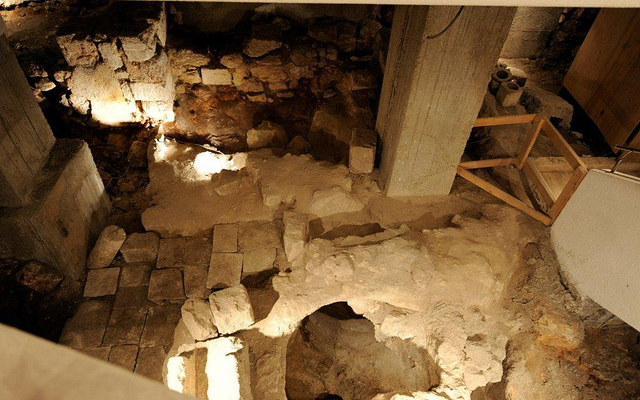A fascinating museum in the Holy City of Jerusalem is testament to thousands of years of Jewish continuity on this land.
By: Atara Beck, Senior Writer, United with Israel
Shortly after the 1967 Six Day War, Theo and Miriam Siebenberg purchased a new home on a hill in the newly liberated Old City. Eventually, the site also became home to the Siebenberg House, a remarkable museum of Jewish history.
When they moved in, Miriam explained in an interview with United with Israel, her husband “had the feeling that since we were so close to the Temple Mount, Jews must have lived here 2,000 years ago. So he wanted to dig.”
He spoke to the authorities, who granted permission to excavate. Immediately, “we pulled the hill out from under the house,” Miriam quipped.
“We found two ritual baths, a wall from the Second Temple period and a burial crypt dating back 3,000 years ago to the time of Kings David and Solomon,” she said.
Over the course of 18 years, many remarkable discoveries were made, including coins, pottery, glass, jars and mosaics. One example – relevant to the Festival of Lights, which is celebrated this week – is large stones from a building dating back to time of the Hasmonean dynasty, which included the heroic Macabbee fighters of Chanukah fame.
The Hasmonean period began with the story of Chanukah, when the People of Israel, led by Judah the Maccabee, revolted against King Antiochus IV Epiphanes, who forbade circumcision and the observance of the Sabbath, according to his agenda to eradicate all traces of the Jewish faith.
“In 164 BCE, they won,” Miriam recounted. “Judah entered the Temple and removed the idol, and in commemoration of this victory we celebrate Chanukah.”
The Hasmonean Dynasty, founded by the Maccabees, the Jewish army that defeated the Hellenistic empire, ruled until 63 BCE.
It is evident that the Siebenbergs never lost their sense of excitement about living, literally, on top of Jewish history. Miriam described a number of findings, such as a 2,600-year-old arrowhead used in the war against the Babylonians and a bronze bell which, it seems, had been part of a musical instrument some 2,000 years ago.
A support pillar on the property has black streaks containing “ashes from the time of the destruction of the Old City about 2,000 years ago,” Miriam enthused.
When the streak lines were uncovered, the Siebenbergs sent the ashes to a radiocarbon laboratory in South Africa, which confirmed that they were “remnants from between the years 40 and 90,” she explained. “The exact date of the destruction of the Upper City [now called the Old City] – the eighth day of the Hebrew month of Elul in the year 70 – we get from [famous first-century historian Flavius] Josephus.”
On the top level of the excavation, they found a machine gun from Israel’s War of Independence in 1948, demonstrating contemporary historic events.
“It was the only armament that the Jews had here,” Miriam said, adding that a man by the name of Yitzhak Mizrahi used to run with a heavy machine gun, from place to place, in order to give the impression that they had more ammunition.
The Siebenbergs have always been eager to welcome visitors to the museum, radiating pride not only in their home and their incredible achievement, but also in their heritage. Indeed, as stated by former President Chaim Herzog in 1985 at the Siebenberg House, “”Here, in our time, you have created a direct link between our wonderful past and present and our exciting future.”

Bring Joy to Israeli Soldiers - Send Winter Care Packages!
We are honored to thank the young men and women of the IDF who risk their lives every day to defend the citizens of Israel.
Join us in sending winter care packages and personal notes of support to Israeli soldiers who are out in the cold all day.
Warm up a soldier's heart with essential winter wear including fleece jackets, hats, gloves and more. Keep an entire unit warm!
THE SOLDIERS REALLY APPRECIATE YOUR LOVE AND CONCERN!
Click Here to Send Your Gift and Personal Note to Israeli Soldiers

